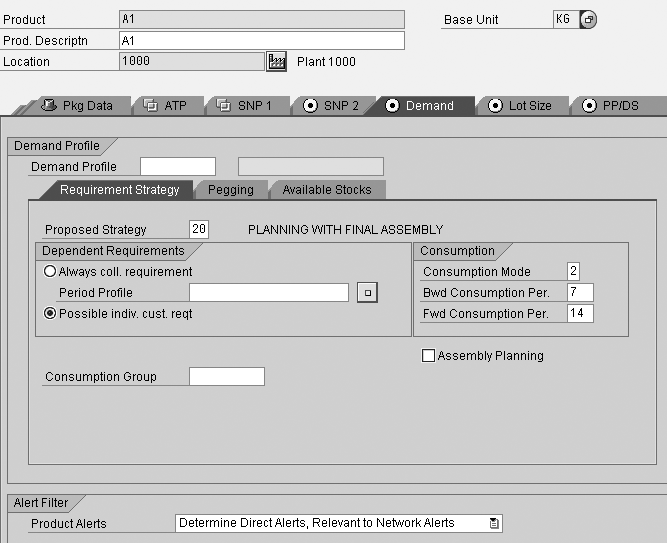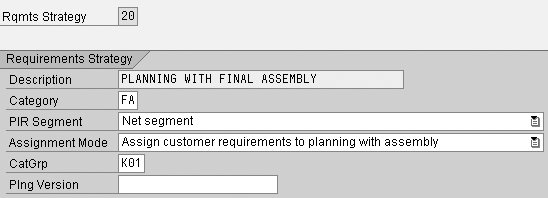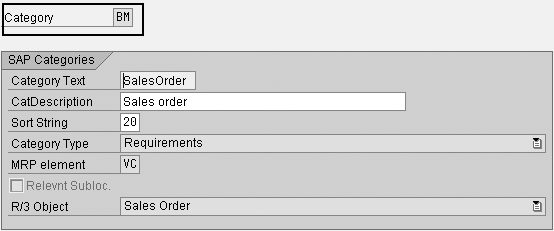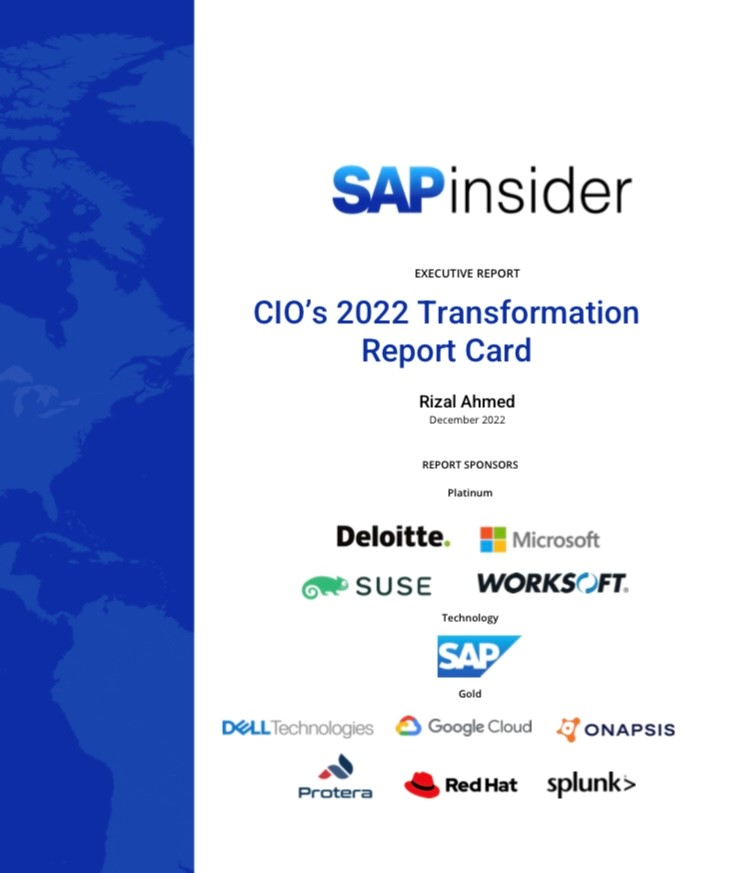I’m going to explain the various
APO requirements strategies, how they
work, and what is required to make the
system really work for you. This article
applies to a manufacturing environment,
where the required products are made,
but you could also use the described
requirements strategies in a purchasing
scenario. Requirements strategies are
used by the system to answer the following
questions:
- Is the forecast used to drive the
production and translated directly
into manufacturing orders? Is manufactured
stock controlled per customer or as
general warehouse stock?
- Is the forecast consumed once sales
orders are received?
Principles
You can view the product’s
requirements strategy in the product
master Demand tab (Figure 1).
This field is usually maintained via
the R/3 Core Interface (CIF), which
uses the R/3 Material Requirements
Planning (MRP) strategies. R/3 has
more planning strategies than there
are requirements strategies in APO,
since only planning strategies that
require up-front planning are sent
to APO. In a pure make-to-order environment,
no activities are carried out before
the sales order is created. Thus, no
product forecast exists and APO does
not need to carry out any planning
tasks. Sales orders created in R/3
are flagged automatically as not relevant
to MRP when using the planning strategy
10 (make-to-stock) in R/3. This causes
APO to ignore these sales orders during
the planning run, ensuring that the
demand is the forecasted demand only.

Figure 1
Use the Demand tab to view the Requirement Strategy profile
The forecast consumption logic plays
a vital role and works hand-in-hand
with the respective requirements strategy.
It is a common but incorrect assumption
that forecast consumption is used to
measure the quality of the forecast.
Forecast consumption is a tool to fine-tune
the demand pattern based on sales orders,
which replace the initial forecast
as soon as they are known. Using forecast
consumption allows you to react more
quickly and accurately to demand that
is not exactly as forecasted. Up to
Release 3.0 the product forecast was
released from Demand Planning for location
product only. Since Release 3.1, it
is also possible to release the product
forecast on a more detailed level (e.g.,
per location product and customer).
The two main settings of requirement
strategies are their allocation to
an assignment mode and to a planned
independent requirements (PIR) segment.
The following sections provide an introduction
to these topics before I go through
the individual requirements strategies.
I’ll start with the assignments
modes, which describe the way the system
consumes the forecast by incoming sales
orders.
Assignment Mode
The forecast is a PIR and anticipates
sales orders to be received by the
business later on. The sales orders
are also PIRs and “replace” the
forecast. Dependent requirements, as
a rule, are not forecasted and for
this reason they do not “replace” the
forecast once they are known. The exception
is the so-called sub-assembly planning,
where dependent requirements reduce
the product’s forecast. Examples
of such dependent requirements consuming
the product forecast are those created
by manufacturing orders or stock transport
orders.
The definition of the forecast consumption
logic as such is independent of the
product’s allocation to the correct
PIR segment, but keep in mind that
the combination of PIR segment and
assignment mode must make sense. For
example, it makes no sense to have
a make-to-stock environment, where
the manufacturing quantities are based
solely on the forecast, and then reduce
this forecast by incoming sales orders.
Four assignment modes are possible,
all predefined by APO. They are linked
to requirements strategies. Table
1 outlines the APO-defined assignment
modes, including how the forecast is
consumed and in which segment. All
orders in APO are stored in segments.
These segments are described in more
detail in the next section.
APO uses segments (also known as
planning segments) to store forecasts,
sales orders, and manufacturing orders.
APO uses predefined segments to carry
out requirement planning separately
per segment.
| Assignment of customer
requirements to planning with assembly |
Sales orders (customer
requirements) consume the product’s
forecast in the net segment. |
| Assignment of customer
requirements to planning without
assembly |
Sales orders (customer requirements)
consume the product’s forecast
in the planning without final assembly
segment. |
| Assignment of customer
requirements to planning product |
Sales orders (customer requirements)
consume the planning product’s
forecast in the planning without
final assembly segment. In this
case an incoming sales order does
not consume its own forecast, but
that of a planning product instead.
Example: A steel manufacturer sells
the same sheet metal in various
colors. Usually it stores products
unpainted. Once they receive a
sales order for a specific color,
they paint and ship the sheets.
The unpainted sheet is the planning
product and is used to drive the
production of the unpainted sheets.
The colored finished products are
the sold products for which sales
orders are received that consume
the planning product’s forecast
(the unpainted sheet metal). This
setup is particularly common in
variant-rich manufacturing environments. |
| No assignment |
No forecast consumption is carried
out.
The assignment method in APO corresponds to the
consumption/allocation indicator in the R/3 planning
strategy. |
| Table
1 |
Assignment modes
defined in APO |
PIR Segment
All forecast and sales order requirements
stored in APO and in R/3 are allocated
to a PIR segment. The product’s
requirement strategy determines which
PIR segment is used in APO. The requirements
strategy profile contains an indicator,
which drives where the PIRs and the
sales orders are stored (Figure
2). Products are linked to
a requirements strategy and, depending
on the requirements strategy’s
PIR segment setting, one or two PIR
segments exist for the product. This
means that with some requirements strategies
more than one PIR segment is used to
store orders of the types planned independent
requirement and sales order.

Figure 2
Requirement strategy profile showing indicator 20, PLANNING WITH FINAL ASSEMBLY
The main task of the PIR segments
is to separate orders based on a make-to-stock
and a make-to-order principle and subsequently
handle the product requirements in
different ways. It also has an impact
on whether the finished products are
received into anonymous warehouse stock
or into customer-specific stock. The
following is a detailed explanation
of the PIR segments:
- Net segment: The
classic make-to-stock principle uses
the product forecast to determine
the procurement quantities. There
are variations on this principle,
where the combination of product
forecast and incoming sales orders
determine the procurement, or where
only the sales orders determine procurement.
The net segment is used in these
cases to store all requirements.
Procurement considers the product forecast (PIR),
if it exists. You can convert planned orders for
production in this PIR segment to production orders.
Sales orders are also captured in the net segment
and might influence the production quantity depending
on the assignment mode. The goods receipt transaction
updates the quantity and value of the warehouse
stock (settlement of cost against stock account).
Stock elements are anonymous warehouse stock and
can be seen in the net segment.
- Planning without final
assembly with individual requirements
segment: The term planning
without final assembly describes
a make-to-order principle. Typically,
in a make-to-order environment
no product forecast is required,
as production is triggered solely
by sales orders. In the purest
form, this type of planning does
therefore not require any product
forecast. Such a forecast is nevertheless
created in some business cases
to determine the dependent requirements
of components caused by the finished
product’s forecast.
Production never considers the product forecast,
but the forecast is used to create dependent requirements.
Planned orders in this PIR segment cannot be converted
to production orders, since they are used only
to create dependent requirements. Sales orders
are captured in a customer segment and always determine
the procurement quantity. They also consume the
product forecast. During the goods receipt the
cost of production is settled against the requiring
order. In R/3, this is either a sales order or
a project order. Stock elements in this planning
segment are order-specific stock and can be seen
in the customer segment. “Order specific” in
this context means that the stock element is linked
to either a sales order or to a project order (R/3
WBS element).
- Planning without final
assembly, without individual requirements
segment: This PIR segment
is not set up in the standard-delivered
APO system, but can be added if
required. It is used in the R/3
planning strategy 52 and offers
a variation on the principles described
above. Unlike a typical make-to-stock
principle, it is possible to receive
the produced goods into the net
segment rather than a customer
segment.
Production never considers the product forecast,
but the forecast is used to create dependent requirements.
Planned orders in this PIR segment cannot be converted
to production orders, since they are used only
to create dependent requirements. Sales orders
are captured in a customer segment and always determine
the procurement quantity. They also consume the
product forecast. The goods receipt transaction
updates the value of the warehouse stock (settlement
of cost against stock account). Stock elements
in this planning segment are anonymous warehouse
stock and can be seen in the net segment.
Note that the cost settlement rule
of production orders is very important
in R/3, but has no significance for
the APO quantity-focused planning task.
Now I will take a look at the requirement
strategies delivered in the standard
system.
Requirement Strategies
Overview
SAP R/3 uses the term “planning
strategy” rather than “requirement
strategy.” They are nevertheless
the same, but not all planning strategies
that can be found in R/3 have a counterpart
in APO, since only products that require
advance planning activities are present
in APO. This means that make-to-order
planning strategies are not transferred
to APO as requirements strategies.
Next, I’ll describe APO requirements
strategies in detail.
Make-To-Stock without Forecast
Consumption
This requirements strategy is called MAKE-TO-STOCK
PRODUCTION in APO and has
the identifier 10.
Find it in R/3 as the planning strategy
group 10.
Using this requirements strategy,
the procurement is based solely on
the product forecast and potentially
other dependent requirements, but excluding
sales orders. Existing sales orders
are ignored during planning. Forecast
consumption is not carried out and
sales orders are satisfied from the
warehouse stock. The forecast is reduced
with the goods receipt and sales orders
do not influence the product planning
at all. Sales orders might be visible
in APO (depending on CIF settings),
but are not MRP-relevant and thus are
not seen as a requirement. The goods
receipt cost settlement is against
the stock account. Forecasts in the
past should be deleted to avoid oversupply.
Make-to-Stock With Forecast
Consumption
This requirement strategy is called
PLANNING WITH FINAL ASSEMBLY in APO
and has the identifier 20.
Find it in R/3 as planning strategy
group 40 (planning
with final assembly) or 70 (planning
at assembly level).
Procurement is carried out based
on the product forecast as well as
the sales orders. To avoid overestimating
the demand, it is mandatory to use
forecast consumption and optionally
forecast adjustment logic. Based on
these principles, the system plans
procurement in accordance with forecast
(medium and long term) and sales orders
(short term). This could also be described
as a “make-to-order-quantity” principle.
SAP also uses the terminology “sales
order orientated planning” to
describe this process, which I detail
later on.
Make-to-Order with Forecast
Consumption
This requirement strategy is called
PLANNING WITHOUT FINAL ASSEMBLY in
APO and has the identifier 30.
Find it in R/3 as the planning strategy
group 50 (planning
without final assembly).
A finished product forecast exists
and is used to create dependent requirements
on lower levels for the components
via a special type of planned order.
This order cannot be converted into
any other type of order (e.g., production
order) and merely serves as a vehicle
to generate the dependent requirements,
which are used to plan procurement
on the lower level. For this type of
order a special, visible flag is set
(e.g., in the Product View transaction). Figure
3 shows product A1 with requirement
strategy 20; the planned
order can be converted (Conversion
ind.). The conversion indicator
flag can be set and Plng w/o Final
Assem or planning without final assembly
is off. Figure 4 shows
product A2 with requirement strategy 30;
the planned order cannot be converted
(Conversion ind. cannot
be set and Plng w/o Final Assem is
on).

Figure 3
Product view transaction showing conversion indicator flag, which you may set, and planning without final assembly flag, which is off

Figure 4
Product view transaction showing no conversion indicator flag and planning without final assembly flag, which is on
The dependent requirements are usually
created based on a make-to-stock scenario,
which allows an early procurement of
components before the finished products’ sales
orders are known. The procurement of
the finished product only takes place
when the sales order is received.
Make-to-Order with Forecast
Consumption Using a Planning Product
This requirement strategy is called PLANNING
PRODUCT in APO and has the
identifier 40. Find
it in R/3 as the planning strategy
group 60 (planning
with planning material).
Especially in business cases in which
variant-rich finished products exist
that share the majority, if not all,
of the components, it makes sense to
carry out the forecast on a “planning
product” level. The planning
product is not a real existing product,
but a type of product group. A forecast
exists for the planning product and
not for each subordinate product linked
to the planning product. The subordinate
products are the real products and
have individual product numbers. The
planning product forecast is used to
determine the dependent requirements.
Once a sales order is received for
any of the subordinate products, the
forecast of the planning product is
consumed and the subordinate product
is procured based on a make-to-order
principle.
Make-to-Order with Forecast
Consumption and Receipt into Warehouse
Stock
This requirement strategy cannot
be found in the standard-delivered
APO system, but you can easily set
it up. You can find it in R/3 as the
planning strategy group 52 (planning
without final assembly and without
MTO).
This is a make-to-order strategy:
a finished product forecast exists
and is used to create dependent requirements
on lower levels for the components
by means of a special type of planned
order in the “planning segment.” To
this extent, the strategy is the same
as the APO requirements strategy 30.
The dependent requirements are usually
based on a make-to-stock scenario,
which allows early procurement of components
before the finished products’ sales
orders are known. Procurement of the
finished product only takes place when
the sales order is received.
Unlike the typical make-to-order
scenario, the finished products are
received as warehouse stock into the
net segment and not into the customer
segment. This has an effect specifically
on the product costing. Also, it is
possible to better utilize lot sizing
procedures and provide customers with
product directly out of stock, although
this is not the main purpose.
Sales Order-Orientated Planning
The concept of sales order orientated
planning is a variation of the make-to-stock
requirement strategies. It is typically
used with the requirements strategy 20 (planning
with final assembly). The concept has
no impact on the medium- and long-term
Supply Network Planning (SNP)-based
planning steps. In the short term,
Production Planning/Detailed Scheduling
(PP/DS) can reduce the forecast down
to sales order level. The levels of
planning are:
Medium- and long-term SNP-based
planning: The forecast is
used as the main demand driver and
procurement is based on the forecasted
requirements while also taking into
account potential sales orders if
they are higher than the forecast.
Since the sales orders reduce the
forecast accordingly, no demand duplication
occurs. This is the normal requirement
strategy 20 behavior.
Short-term PP/DS-based planning: Once
the forecast has reached the PP/DS
horizon, you can run a special heuristic
to identify all those forecasts for
which no sales orders have been received
yet. In other words, the forecasted
requirements have not materialized
and thus no sales orders were captured.
Running the heuristic SAP_PP_014 (Ascertaining
Pl. Ind. Requirements) lists
all forecasts that are not reduced
to zero and reside within the “requirements
ascertainment horizon,” which
is based on the location’s production
calendar. This horizon is specified
in the location product master PP/DS
tab. Only a list is generated in this
step, and no forecast reduction takes
place.
Operational PP/DS-based planning: Some
time before the final decision needs
to be made whether the product is to
be produced or not, a second heuristic
is run, which identifies again all
such forecasts for which no sales orders
have been received yet. The heuristic SAP_PP_015 (Adjusting
Orders and Pl. Ind. Requirements)
reduces all forecasts and production
orders so that they are for same quantity
as the sales orders. This adjustment
is carried out for a horizon as specified
in the location product master PP/DS
tab field Adjustment Horizon,
which is based on the location’s
production calendar.
The functionality of the used heuristic
is similar to that of the planning
adjustment program, but is more flexible
(defined per location product) and
controlled by master data rather than
a program variant. It also reduces
forecast and corresponding procurement
proposal in one step.
The heuristic SAP_PP_015 reduces
forecast quantities by the same quantity
by which it reduces planned production
order quantities. That means that forecasts
with no corresponding planned production
orders are not reduced (or deleted).
As a result of this process, no forecasts
will be deleted if stock is available
to cover the forecasts. The heuristic
also adheres to the planning time fence,
and does not delete orders that are
within it.
Implications for
the Default Requirements Strategy
It is not mandatory to define a requirements
strategy in APO to carry out the planning
tasks in SNP and PP/DS. If no requirements
strategy be defined in the product
master, then the system behaves in
accordance with some predefined rules.
The problem is that the way the demand
is calculated depends on the planning
algorithm used:
- SNP heuristic: The
total independent demand considered
by the SNP heuristic is calculated
using the product’s forecast
horizon, defined in the product master.
Within this horizon (day 0 through
to the number specified in the product
master), the total independent demand
is equal to the sales order demand.
After that day, the total independent
demand is the greater of the two,
sales order or forecast demand.
- SNP optimization: Unlike
the SNP heuristic, SNP Optimizer
uses the sum of forecast and sales
order as the total independent demand.
The product’s forecast horizon
has thus no impact.
You can change this logic (from version 3.1 upwards
without source code correction) so that SNP Optimizer
works the same way as the SNP heuristic. A change
of logic might be helpful if no requirements strategies
are defined in the product master.
- PP/DS heuristic: The
PP/DS heuristic works in the same
way as the SNP Optimizer. Both SNP
Optimizer and PP/DS heuristics take
past forecasts into account. Note
that good “forecast housekeeping” is
required: forecasts in the past,
as a rule, should be deleted.
The dependent requirements are always
added to make up the overall demand.
This, by the way, also applies when
defining requirement strategies.
Dependent Requirement
Strategies
In cases in which finished products
are made based on a make-to-order principle,
you must also decide whether to procure
the components (dependent requirements)
based on the make-to-order principle
or the make-to-stock principle. APO
offers both options, with some variations:
- Dependent requirements
always make-to-stock: With
the option Always Collective
Requirements selected,
APO creates dependent and stock
transfer requirements for the finished
product in the make-to-stock PIR
segment — the net segment.
Any dependent requirements are
covered by the anonymous warehouse
stock. Shortages of the component
stock lead to procurement orders
in the net segment. In this way,
the dependent requirements of one
or several make-to-order finished
products are satisfied by stock
or a single procurement order.
Dependent requirements can be accumulated
per period (e.g., day or week)
and thus influence the lot size
building of the component during
procurement.
The cost settlement of the component’s procurement
order is against anonymous warehouse stock.
- Dependent requirements
possibly make-to-stock: You
must consider two scenarios. The
distinguishing factor is the requirements
strategy of the dependent demand-generating
finished product.
Should the finished product be procured based on
a make-to-stock principle, then the dependent requirement
of the component is also procured based on the
make-to-stock principle. Orders are then created
in the net segment. Should the finished product
be procured based on a make-to-order principle,
then the dependent requirement of the component
is also procured based on the make-to-order principle.
Orders are then created in the Planning
without Final Assembly Segment. This means
that for every finished product demand (sales order
or project order) a procurement order for the component
will be created (one-to-one relation).
The cost settlement of the component’s procurement
order is against the demanding order of the finished
product.
Since the selection of the planning segment is
driven by the demanding finished product, the component
might be planned in both planning segments.
Planning Product
Hierarchy
As you have seen, some of the requirements
strategies use planning products to
combine the forecast of several “real” products.
A planning product does not have to
be a physical product — it is
merely something that is used to group
forecasts and consume them later in
the process. The relation between the
planning product and its subordinate
real products is defined in R/3 and
sent over to APO via the CIF. APO automatically
creates a location product hierarchy
in this case. This hierarchy consists
of the planning product on the top
level and the real products on the
lower level. The forecast released
from Demand Planning is for the planning
product and the forecast consumption
of the planning product is carried
out whenever a sales order is received
for one of the real products linked
to the planning product via the hierarchy.
To view the generated product hierarchies,
use menu path Master Data>Hierarchy>Maintain
Hierarchy (transaction /SAPAPO/RELHSHOW).
Requirements Strategies
in SNP and PP/DS
The requirements strategy you select
has an impact on SNP as well as PP/DS-based
planning. Since SNP is a medium- to
long-term planning tool, it covers
products that require planning in this
horizon only. In the standard-delivered
system, it therefore only displays
and considers data that is stored in
the Net Segment. It
is possible to view data of the make-to-order
segments in SNP, via the creation of
a special key figure. Note that in
this case SNP does still not plan in
the make-to-order segment.
PP/DS, on the other hand, displays
and uses data stored in both the make-to-stock
and the make-to-order segments. The
way SNP and PP/DS handle requirements
strategies settings is congruent, but
PP/DS can also carry out planning tasks
within the make-to-order planning segment.
System Setup
You have to make or verify some system
settings to use requirements strategies
and forecast consumption logic. They
are unfortunately not grouped together,
but are found in various areas of the
system. The following list provides
an overview of the required tasks.
As some settings depend on those previous,
they should be carried out in the order
listed.
Step 1. Requirements strategy. Check
the system-delivered requirements strategies
and create your own using the create
function if required. Specifically
check that the specified order category
defined in the field Category
Group is the same that is
used for the forecast release (Figure
5). Use menu path Demand
Planning> Environment>Current
Settings>Specify Requirements Strategies (transaction S_AP9_75000142).

Figure 5
Check that the Cat or Category Group column matches the forecast release in the Requirements Strategy view
Step 2. Order category. Ensure
the order category used to consume
forecasts (usually order type BM for
sales orders) is defined correctly
(Figure 6). This is
specifically important when using non-SAP
categories. Use menu path Customizing>Advanced
Planning and Optimization>Global
Available to Promise (Global ATP)>General
Settings>Maintain Category.

Figure 6
Check the order Category in the Maintain Category view
The order category for sales orders
defined above also needs to be defined
in the SNP planning area used as the Category of
the key figure 9ADMDP1 (Figure
7). The menu path is Supply
Network Planning>Environment>Current
Settings>Administration of Demand
Planning and Supply Network Planning.
Next, check that the forecast release
from Demand Planning uses the same
order category. The order category
specified in the release profile must
match the one defined above. Use menu
path Demand Planning>Planning>Release
to Supply Network Planning (transaction MC90).

Figure 7
Check to see if the Category is correct for key figure 9ADMDP1
Step 3. Category group. Check
the category groups that are defined
in the standard-delivered system (Figure
8). Specifically, when using
forecast consumption based on dependent
requirements (assembly planning), it
is likely that new category groups
need to be created. Use menu path Customizing>SAP
Advanced Planning and Optimization>Supply
Chain Planning>Supply Network Planning
(SNP)>Basic Settings>Maintain
Category Groups.

Figure 8
Check to see if the CatGrp is defined in the system, or you need to create one
Step 4. Check mode. Ensure
that the check modes are set up correctly.
R/3 transmits via the core interface
the R/3 requirements class as the APO
check mode, which must be set up when
using assembly planning. Since no plausibility
checks are done in APO, you must create
check modes in APO with the same names
as the corresponding Requirements Class
in R/3. Use menu path Customizing>SAP
Advanced Planning and Optimization>Global
Available to Promise (Global ATP)>General
Settings>Maintain Check Mode.
Some of the points listed above may
appear redundant, but in my experience
it is very easy to overlook an important
setting, and it will cost a lot of
time at a later stage to find out why
the system does not work as expected.














